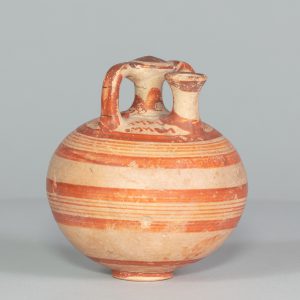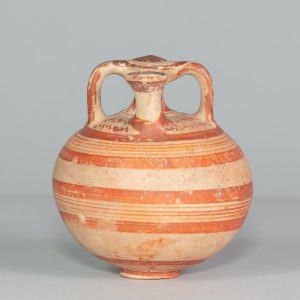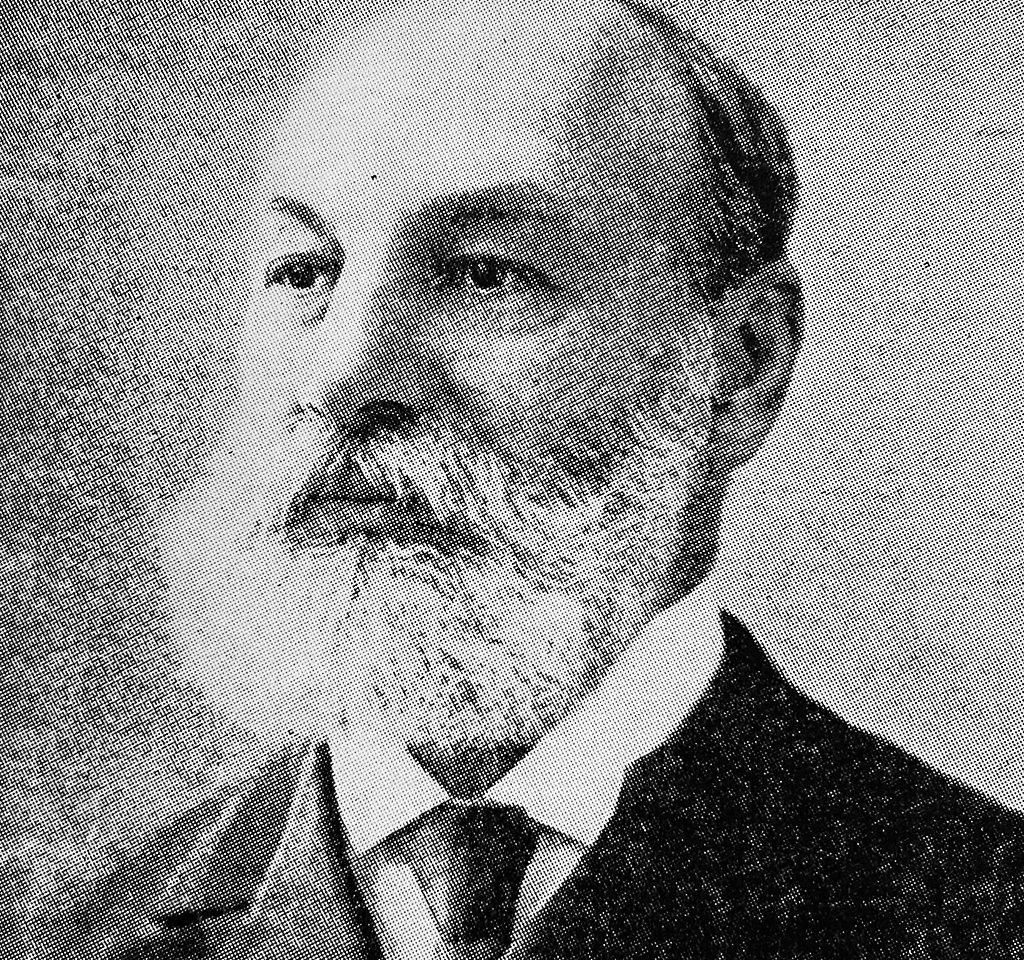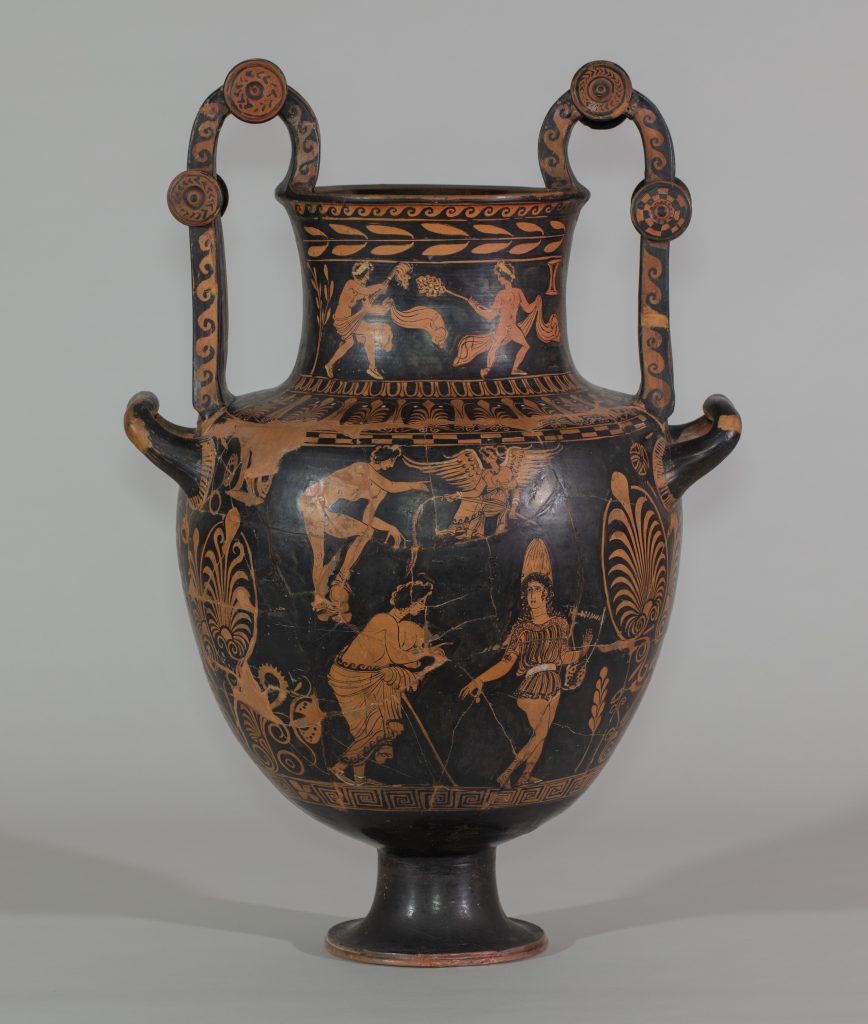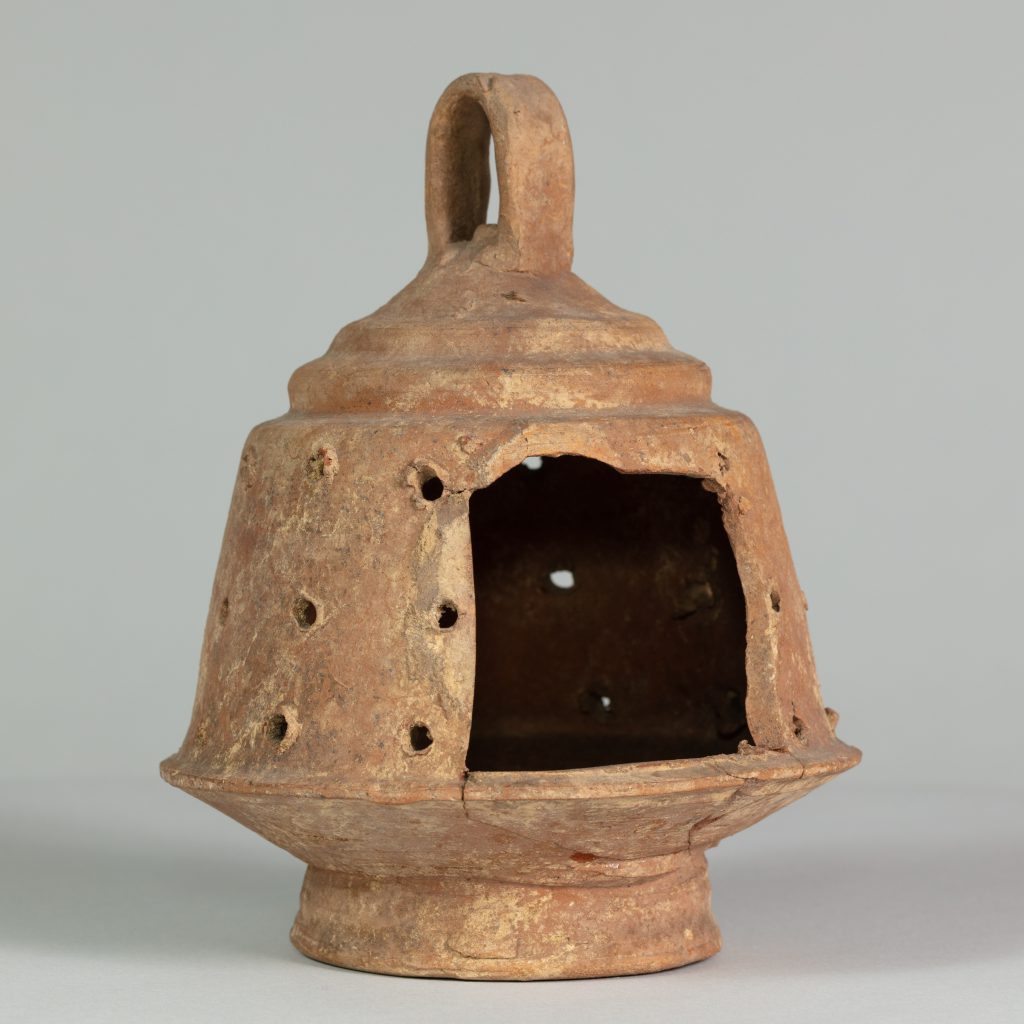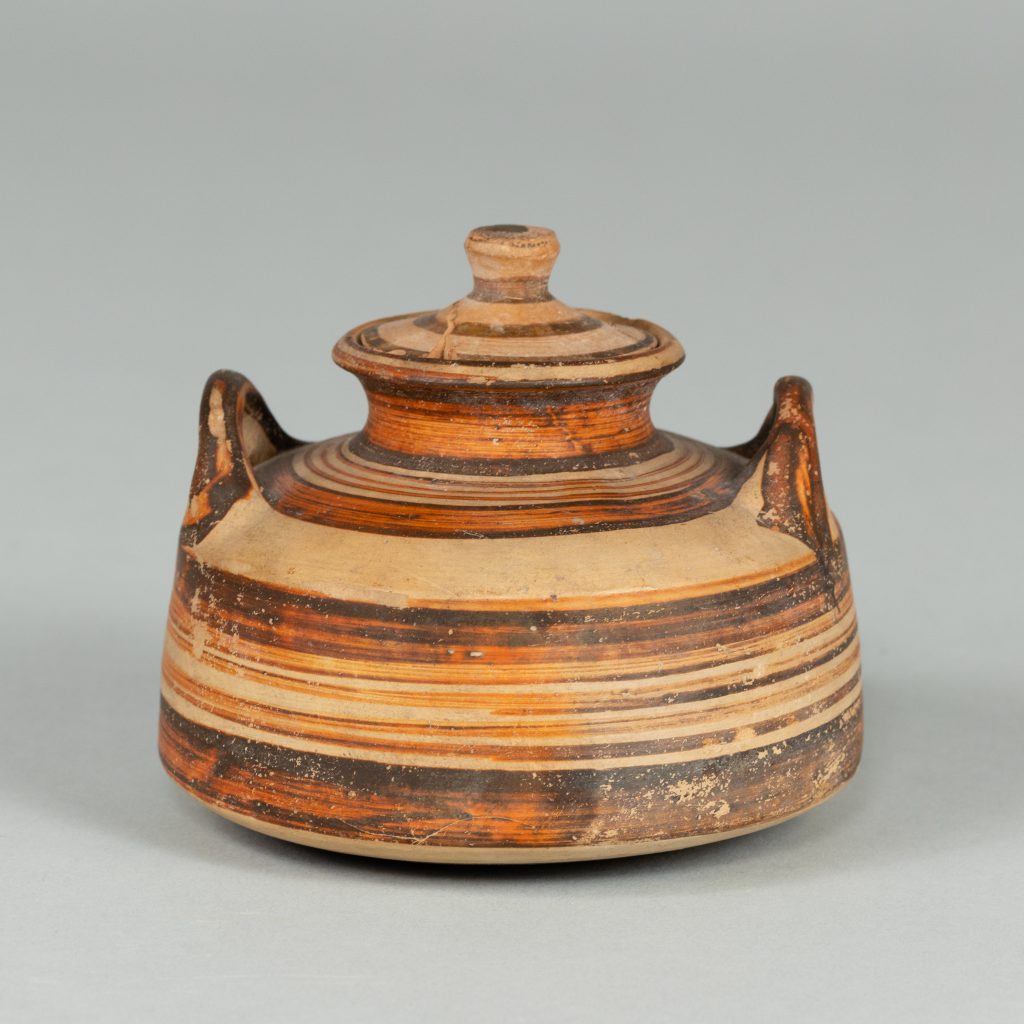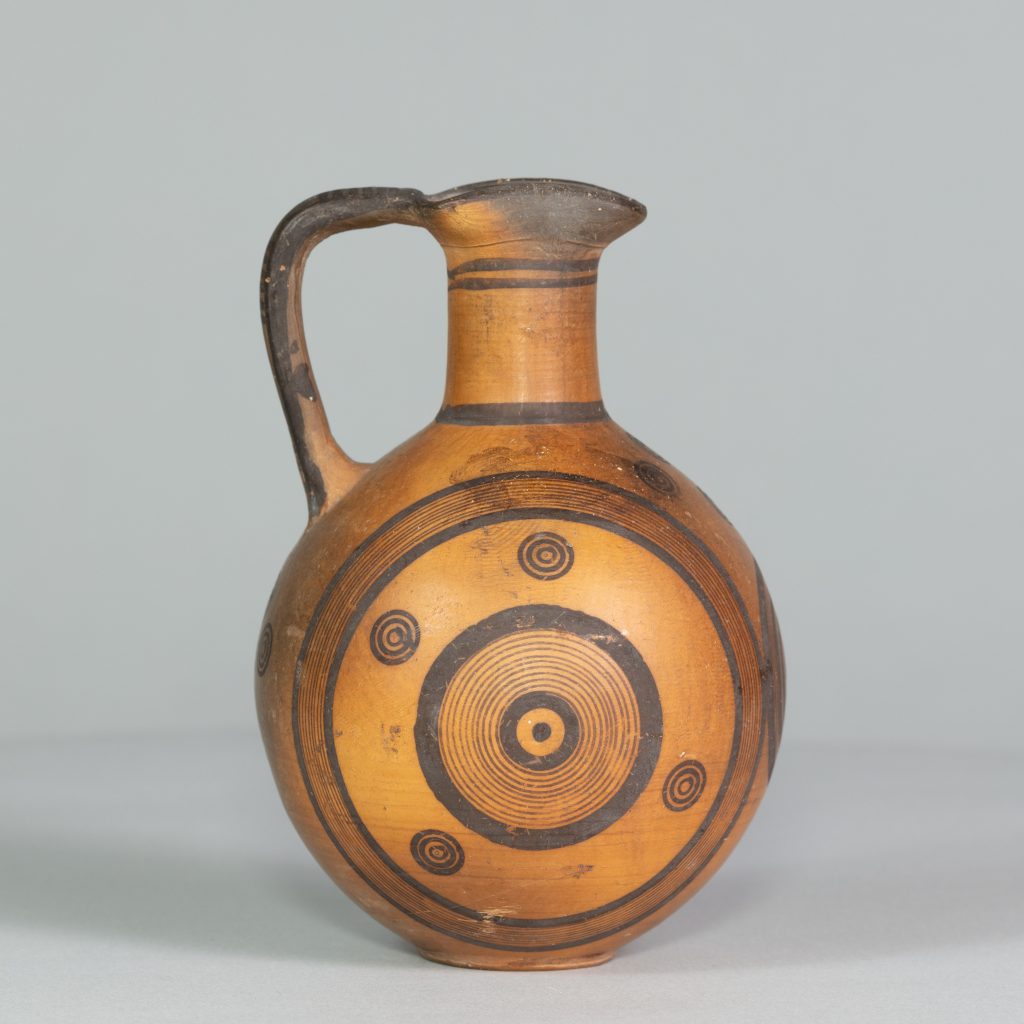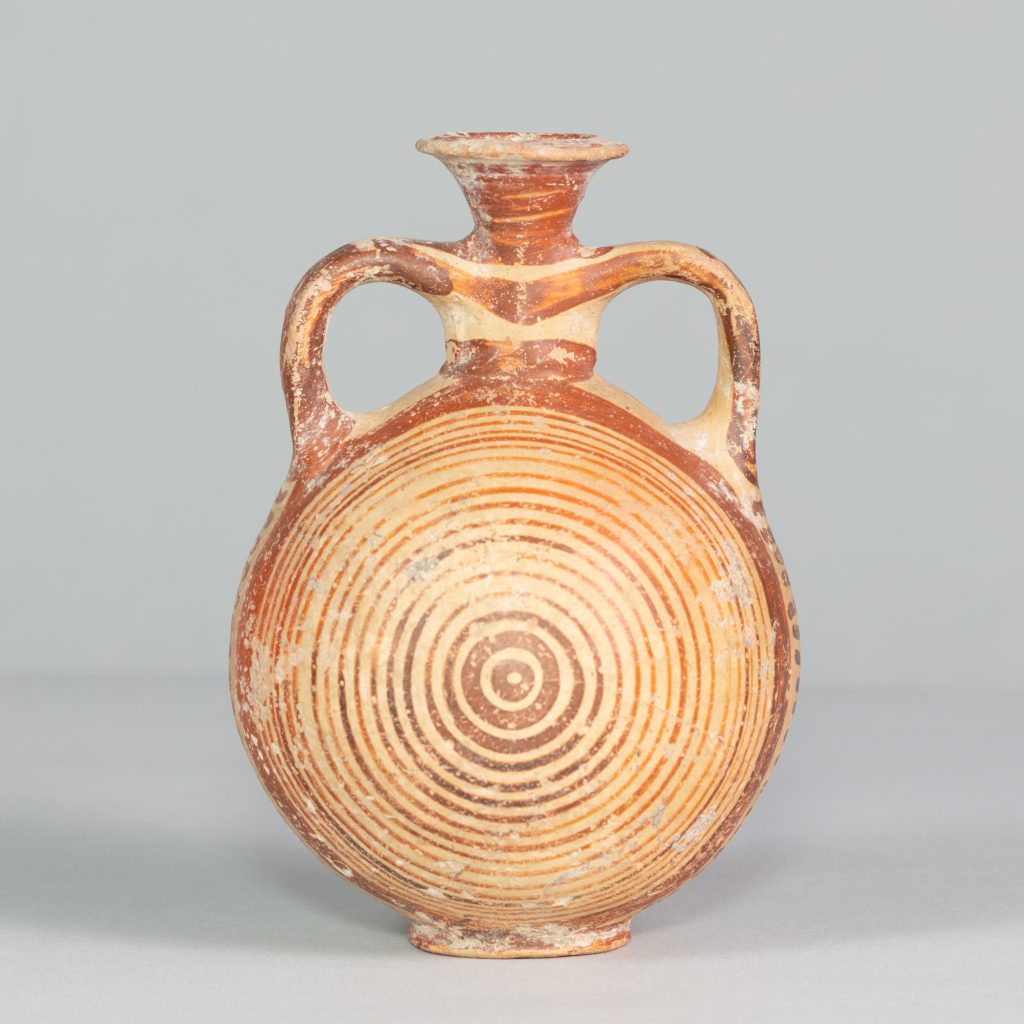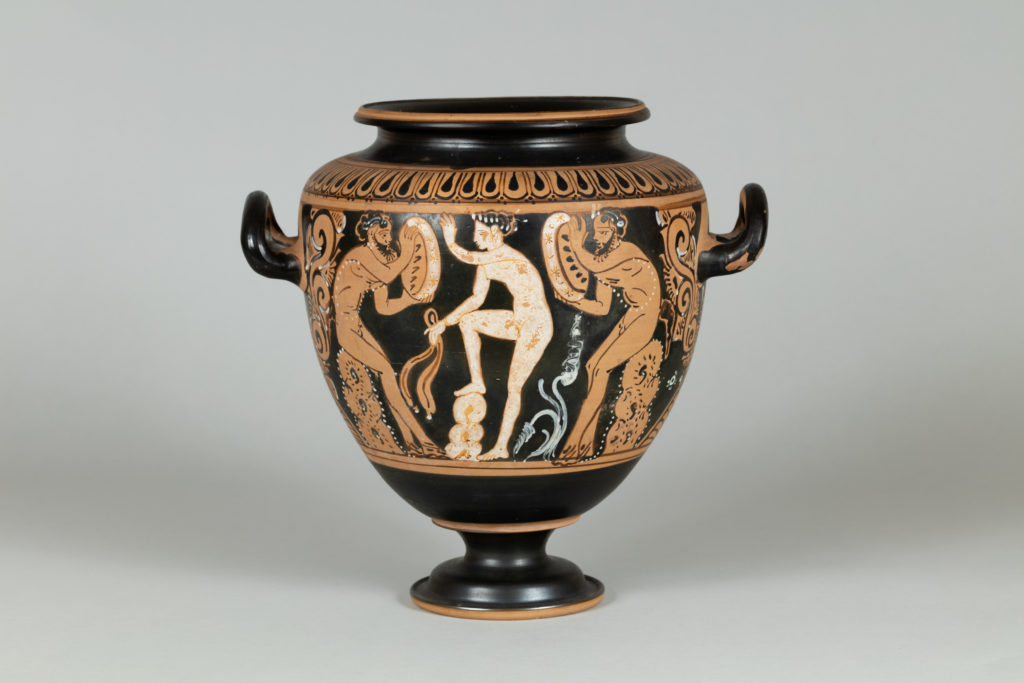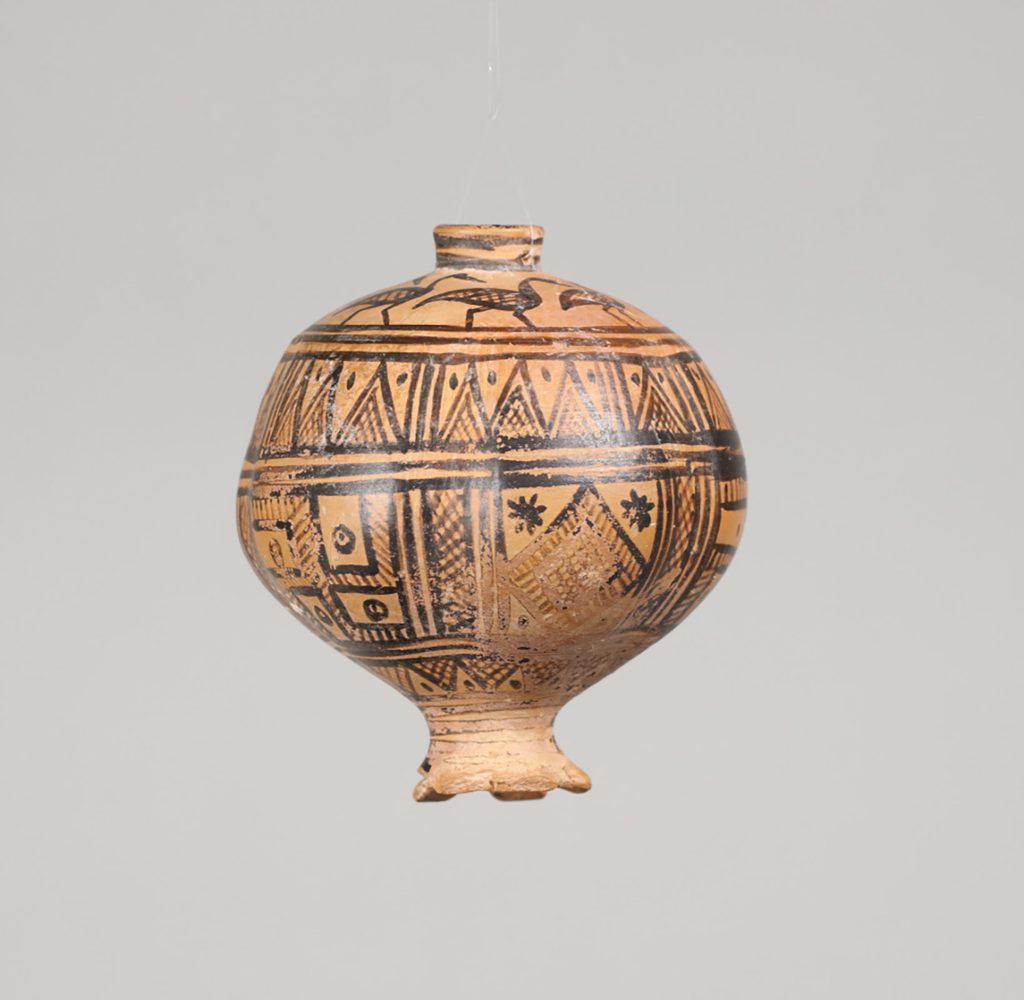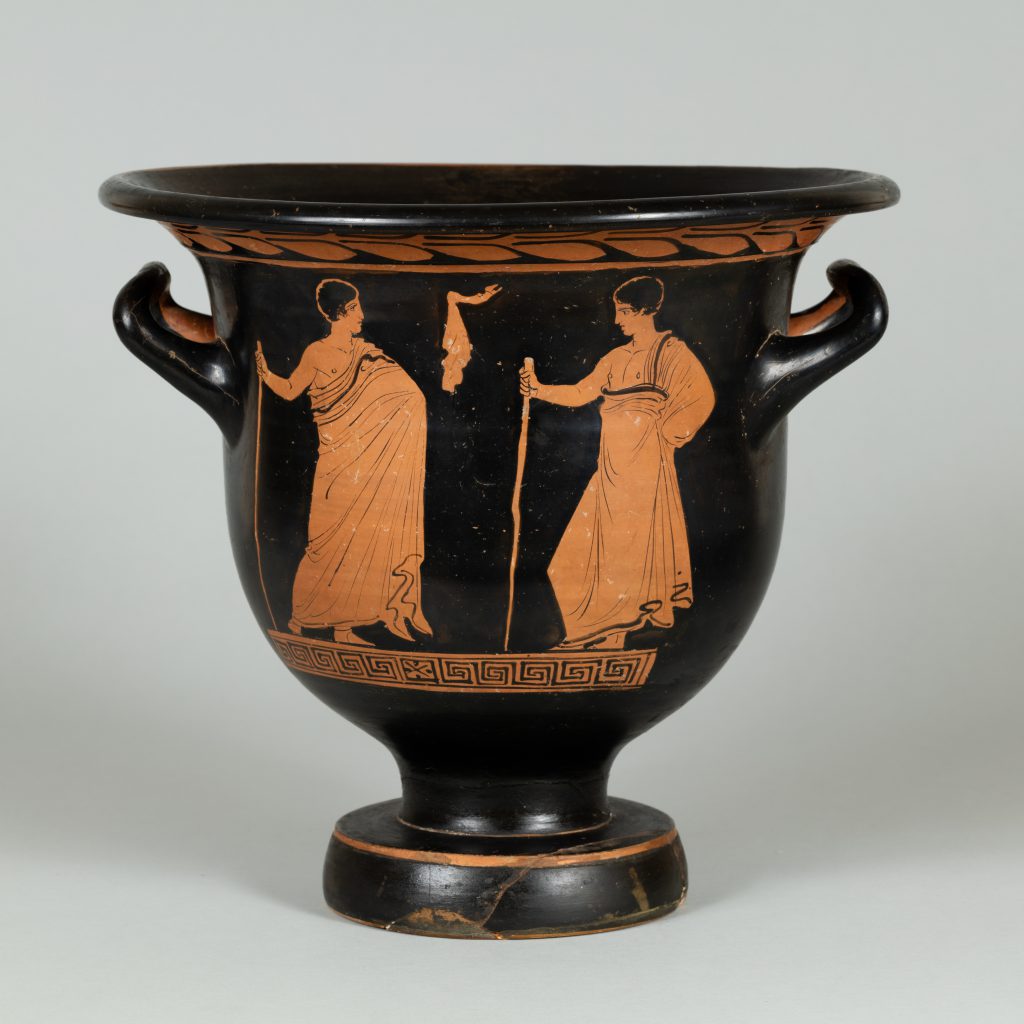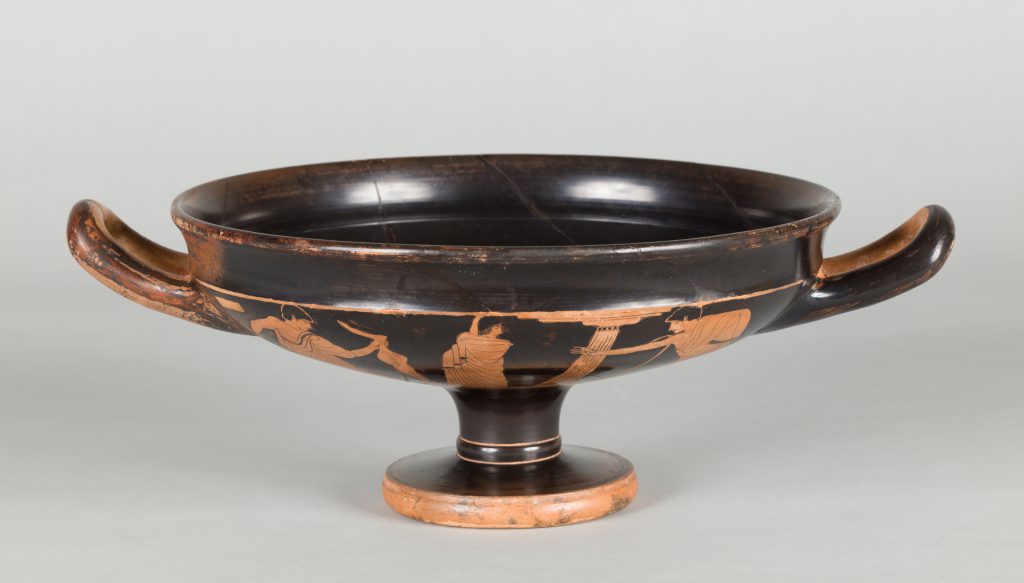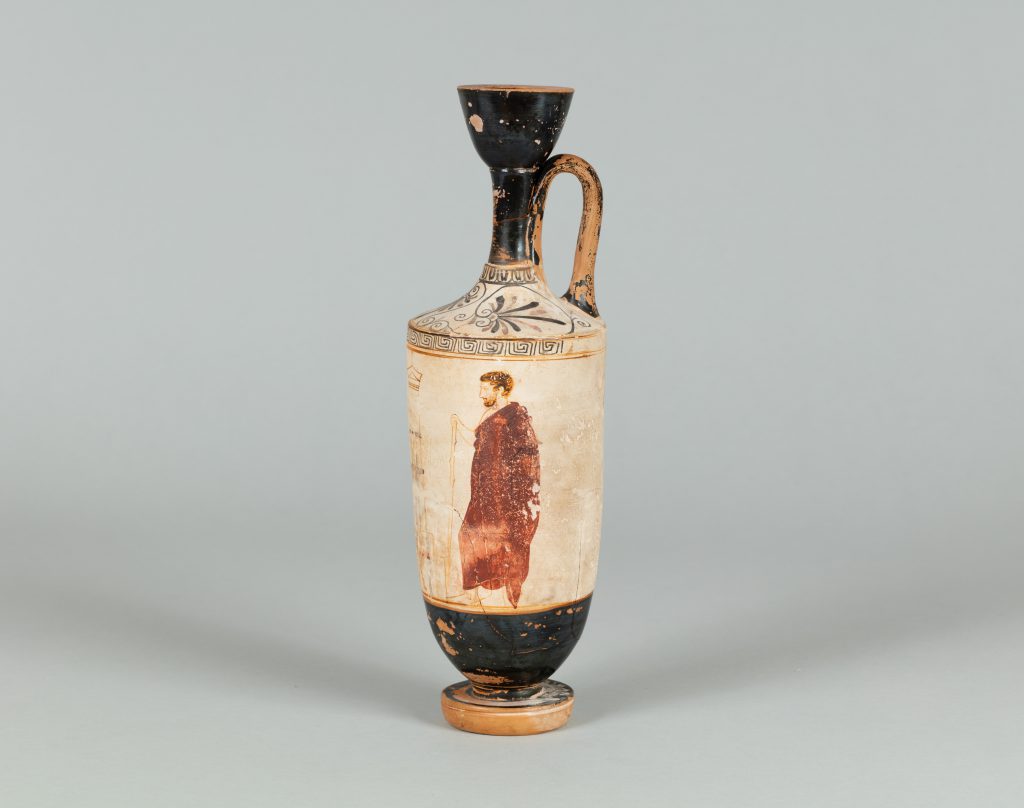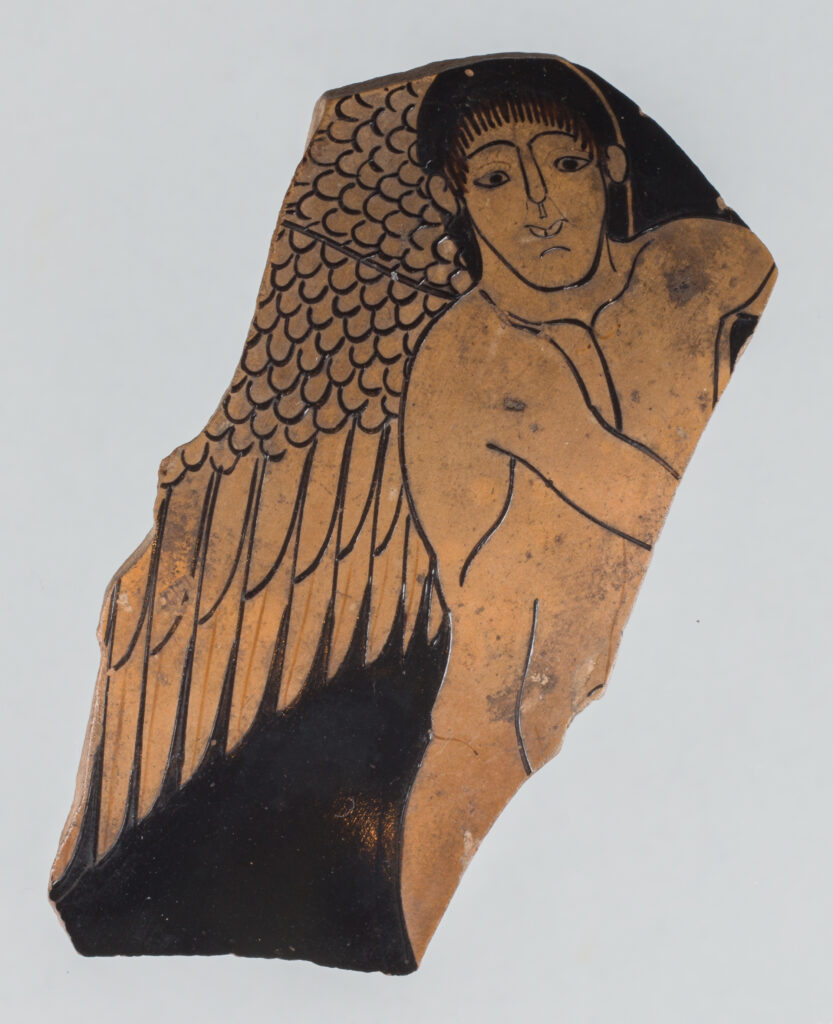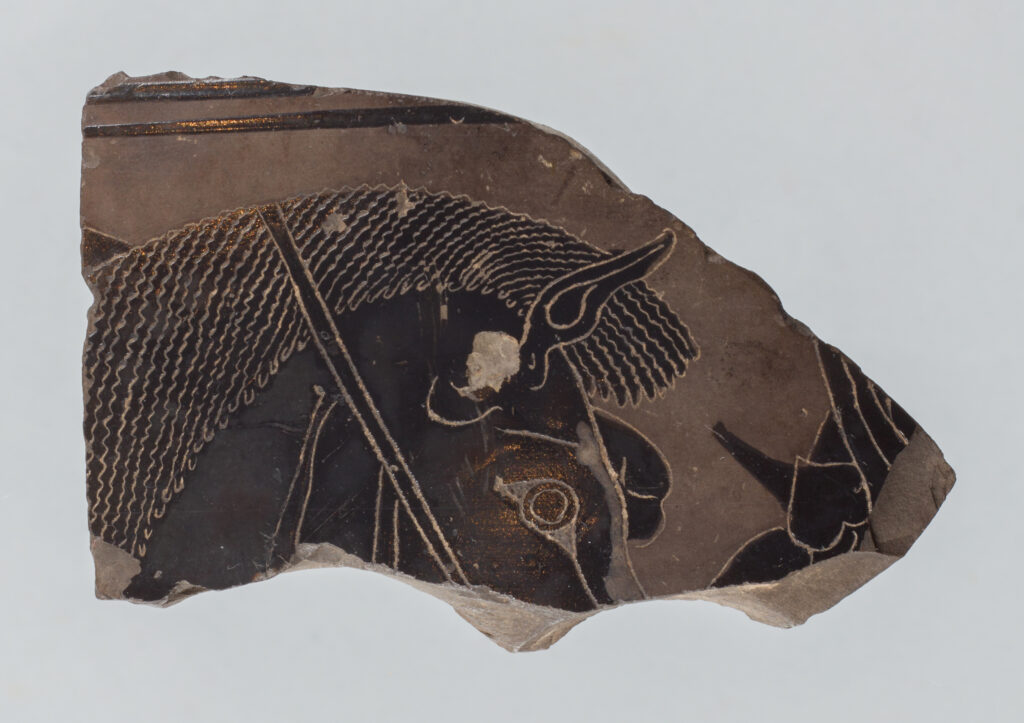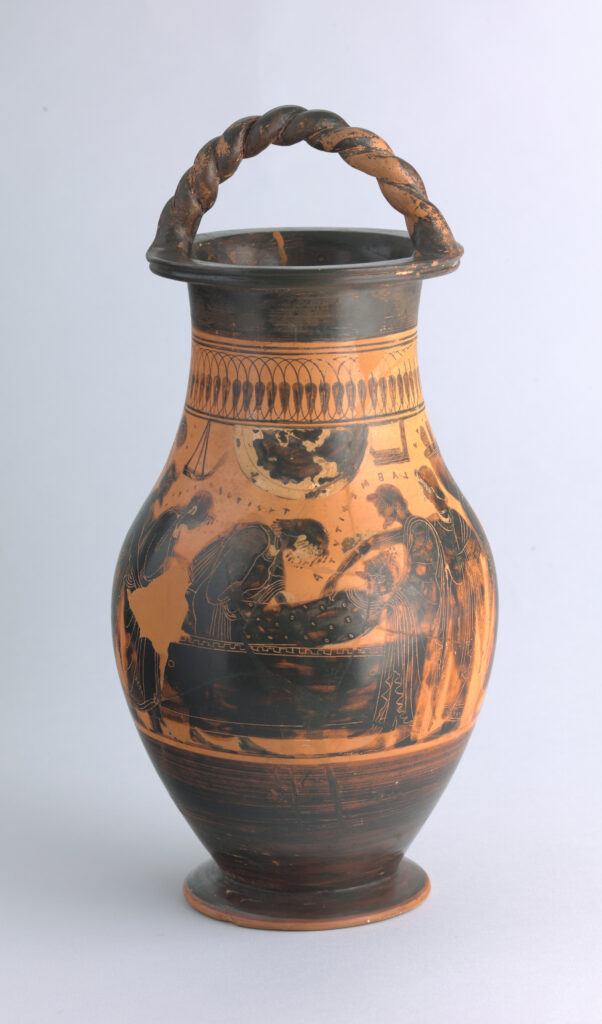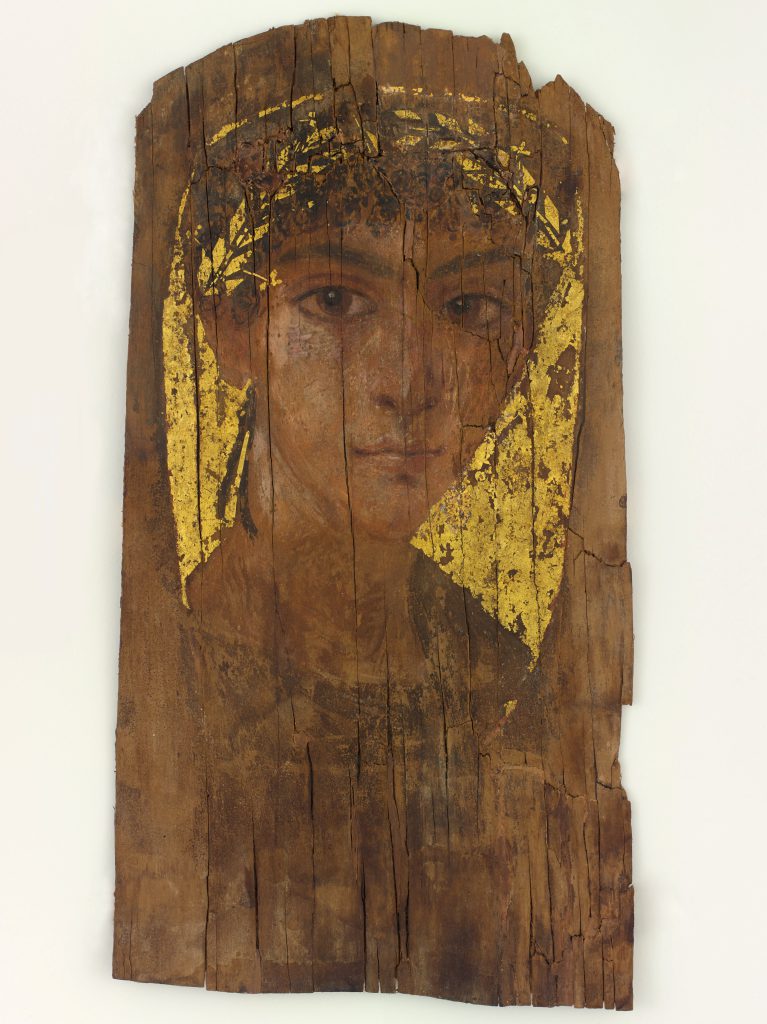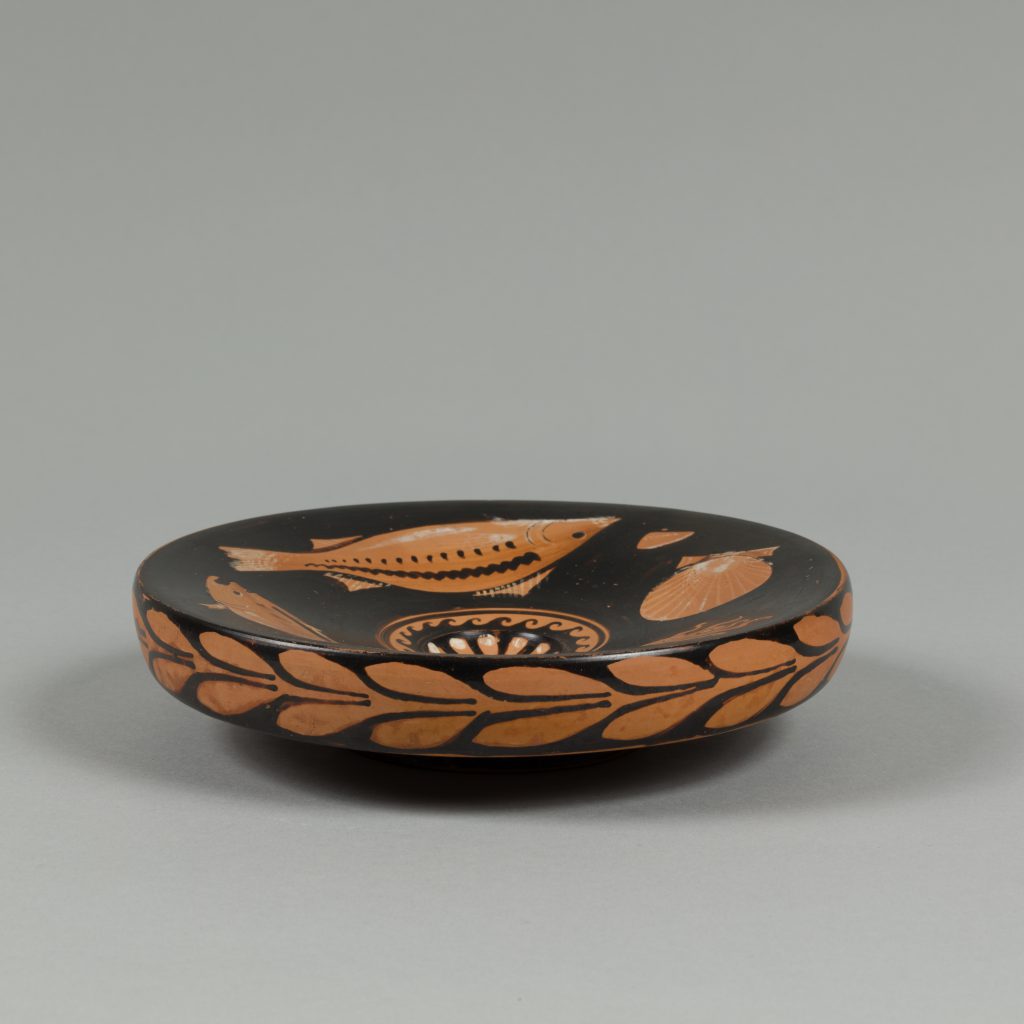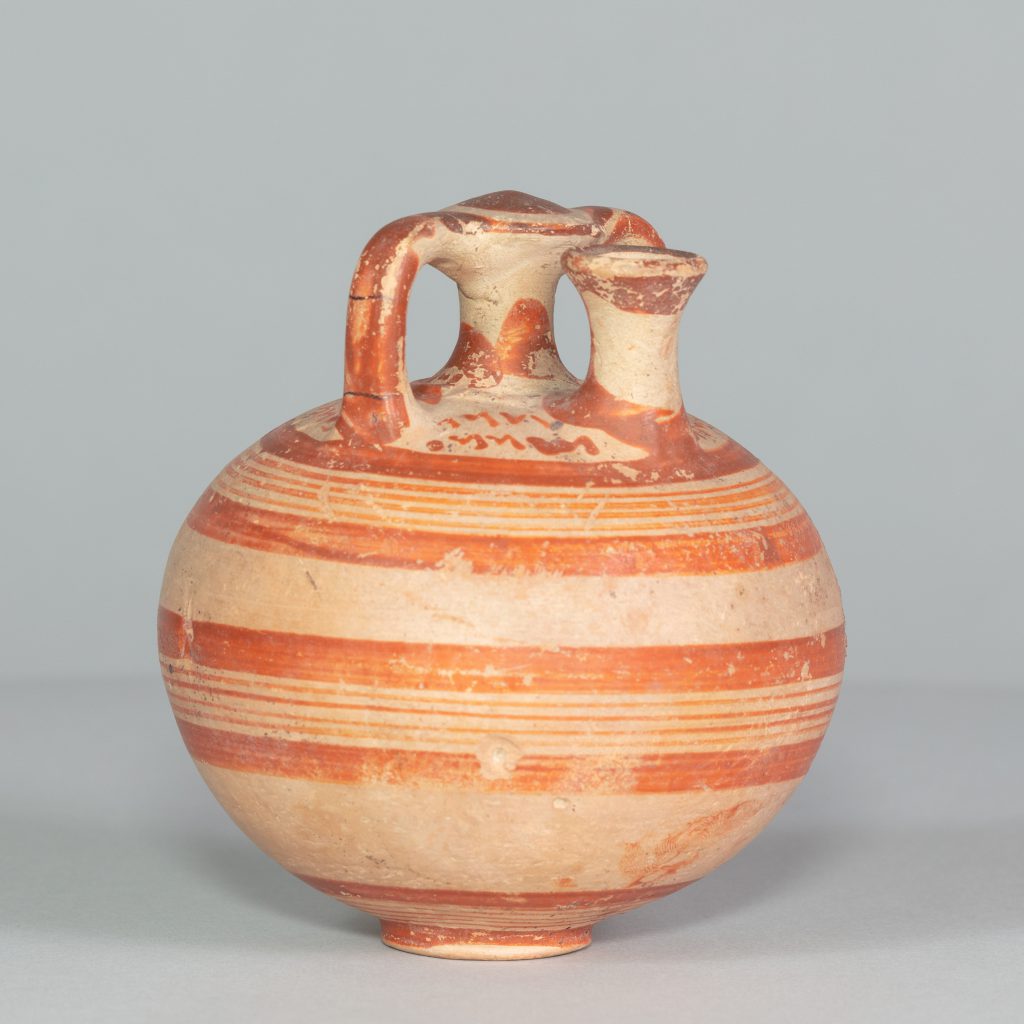
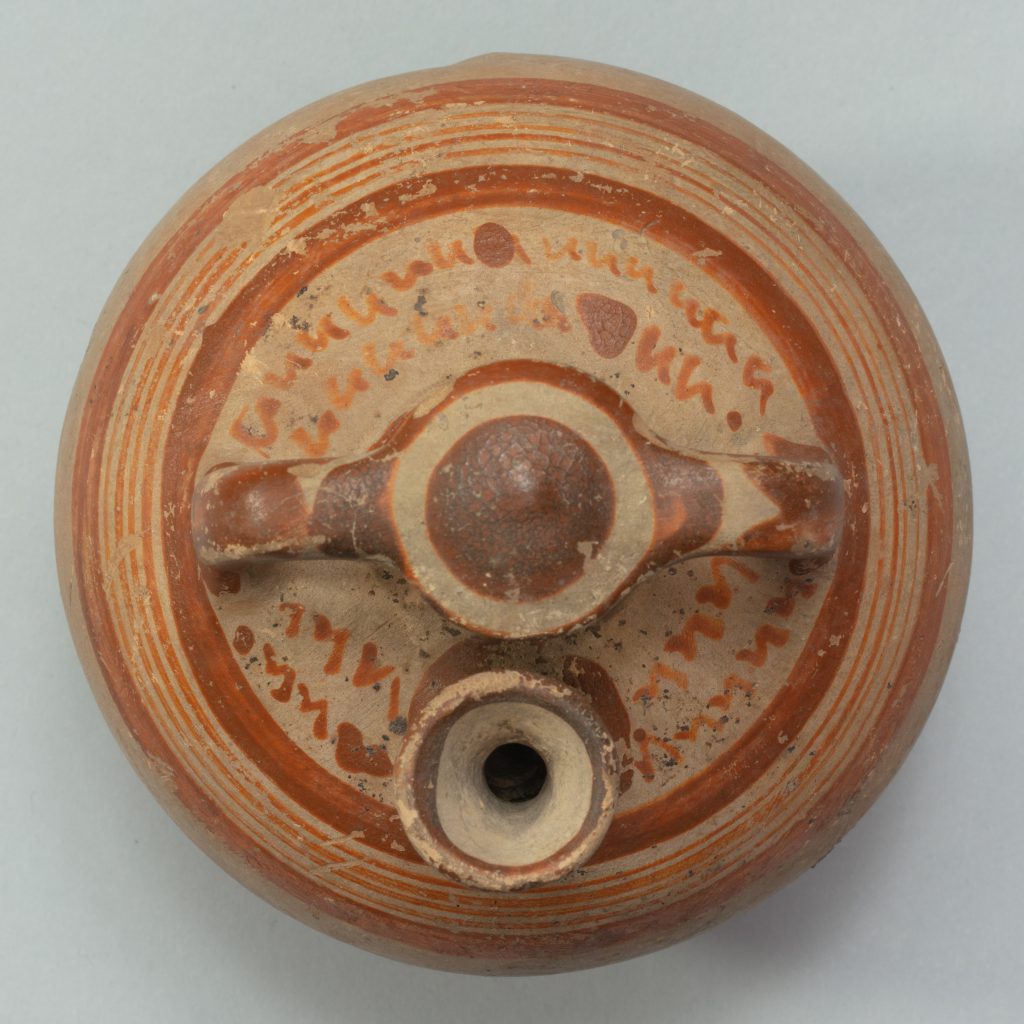
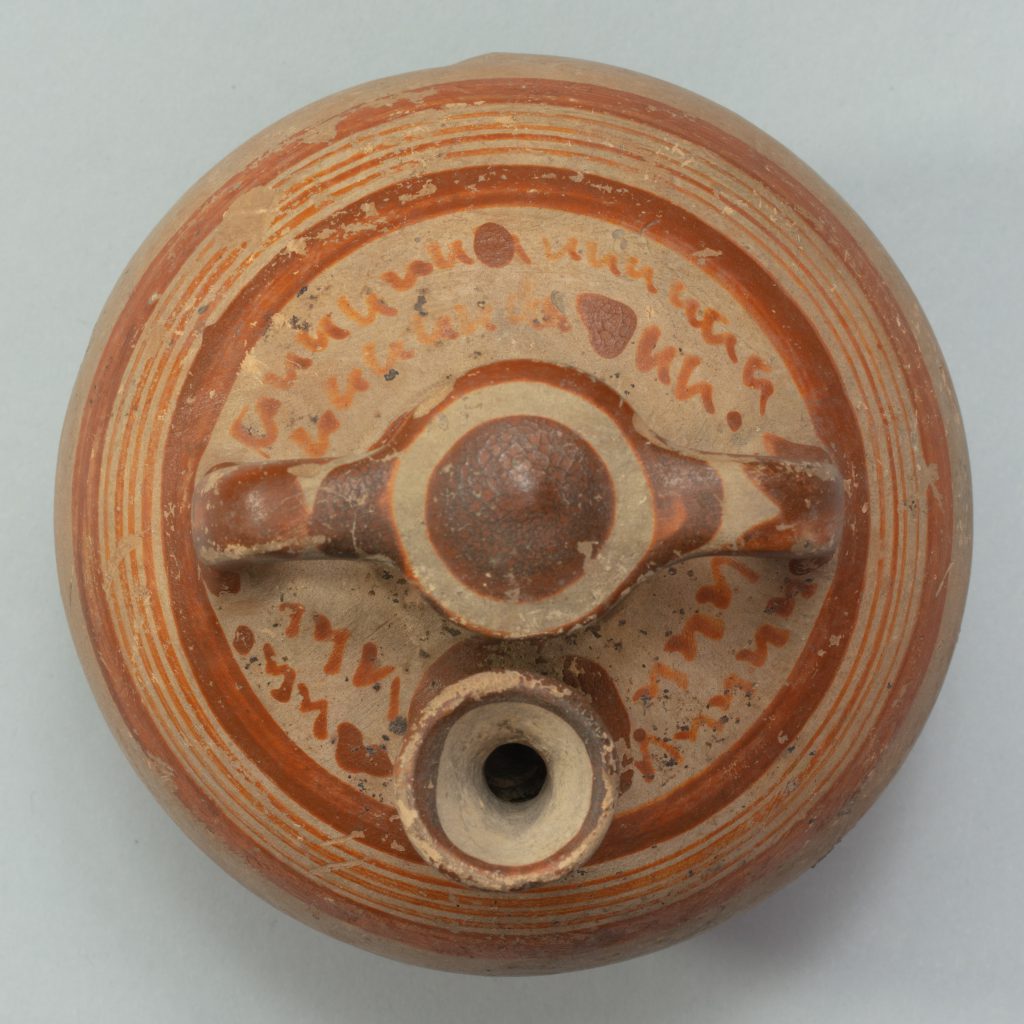


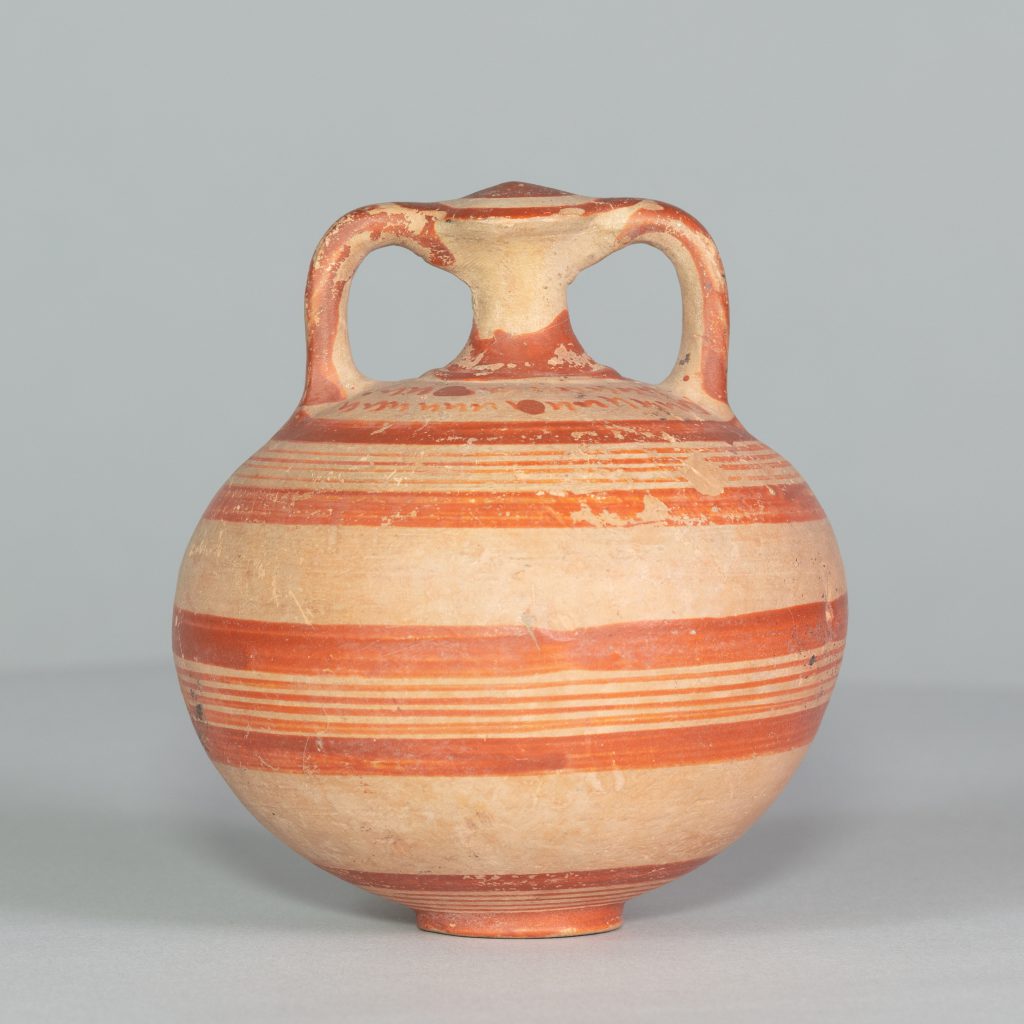
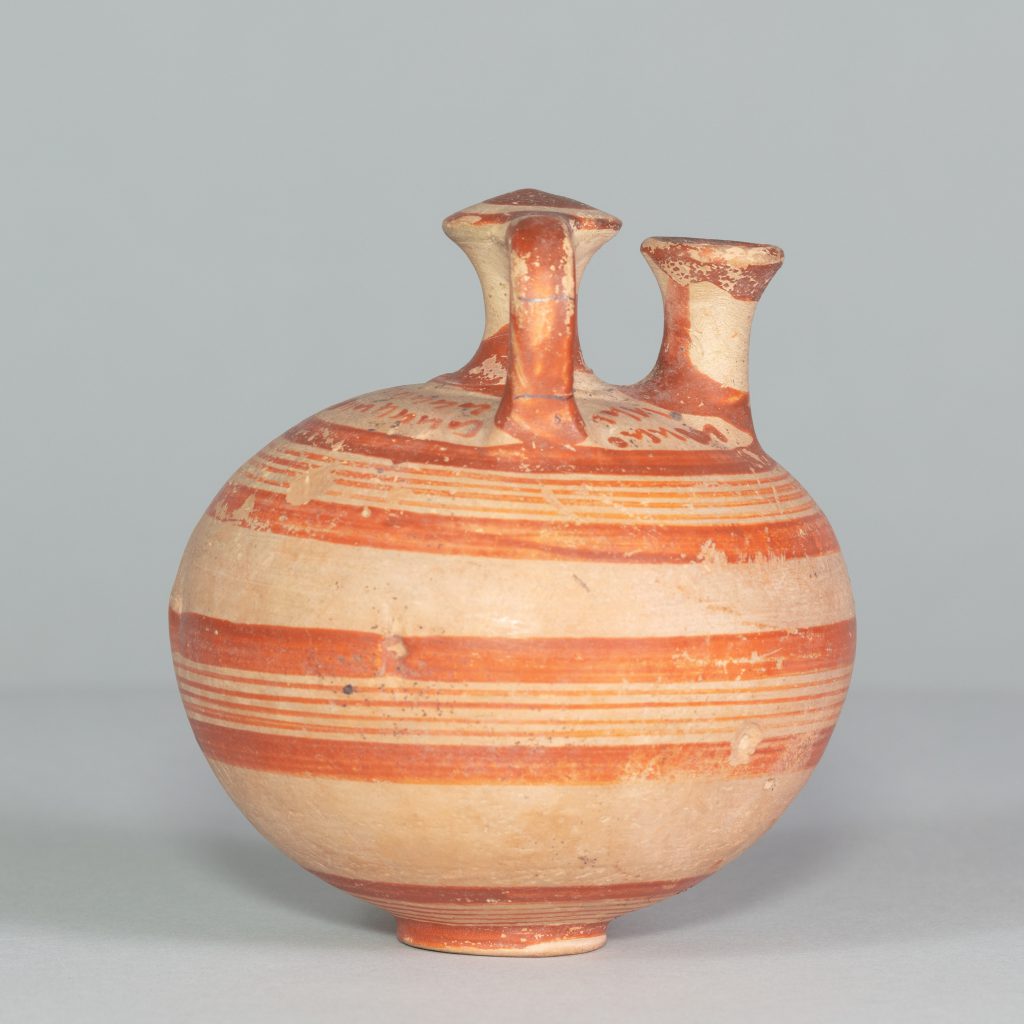
Gift of Mr. Dana C. Estes, Honorary Degree 1898
1902.17The stirrup vase is one of the most recognizable and common forms of Mycenaean culture, a late Bronze Age civilization that thrived on mainland Greece during the second millennium BCE. Mycenaean artists traveled the region and Mycenaean vessels were exported and imitated across the Mediterranean, including Cyprus, where this vessel was discovered. Based on similarities to vessels discovered at major Mycenaean sites for the production of ceramics, this vessel was likely imported to Cyprus at the end of the second millennium. Many finer stirrup vases feature Linear B writing, a syllabic script that anticipated later Greek. The writing along the top of this vessel is likely a pseudo-script, imitating finer wares. Stirrup jars were used for containing and exporting liquids like oils and were unique to Mycenaean civilization.
Mycenaean Greek culture, which dominated the Greek mainland during the late Bronze age (1750–1050 BCE), had a significant impact on Cyprus for several centuries, from 1400–1050 BCE. During this period, Mycenaean ceramics were imported to Cyprus in great numbers. Cypriot wares also evolved under the stylistic influences of Mycenae.
In antiquity, Cyprus was a cultural crossroads and a focal point of successive conquests by the Assyrians, Egyptians, Persians, Ptolemies, and Romans. As one of the largest and easternmost islands in the Mediterranean, it was a place where the cultures of Western and Eastern Mediterranean converged along major seafaring trade routes. At all points in its history, Cypriot art and material culture show a profusion of stylistic influences, sometimes tending towards Greek culture, and other times towards the cultures of the Phoenicians and the Near East. As a geographical crossroads, many imported goods from across the Mediterranean could be found in Cyprus, including at various points Greek vases, Egyptian faience, and Roman wares.
1876–8, excavated in Cyprus by Major Alessandro Palma di Cesnola under the patronage of Edwin Henry Lawrence; 1879, Lawrence-Cesnola Collection, London; 1892, purchased by Dana C. Estes at Sotheby, Wilkinson, and Hodge auction, London; acquired by Bowdoin College Museum of Art in 1898, gift of Dana C. Estes.
Collector
Maine native Dana C. Estes (1840–1909) was a founding partner of a prominent Boston bookseller and publishing house, Estes & Lauriat (est. 1872), which later operated as Dana Estes & Co. (1898–1909).
